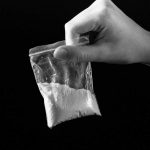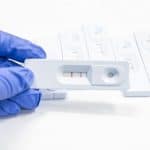Methamphetamine (or “meth”) is a powerful stimulant drug. It causes a rush of energy, confidence, and euphoria (intense joy). It also poses serious health risks, including overdose and addiction.
Like other drugs, meth has a unique taste that many people find unpleasant.
What Does Meth Taste Like?
The taste of meth depends on the form. There are two main forms of meth: prescription meth and illegal meth.
Prescription Meth
Prescription meth is a medication used to treat attention-deficit/hyperactivity disorder (ADHD), obesity, and narcolepsy. Prescribed under the brand name Desoxyn, it’s a white, round tablet taken by mouth.
Some people claim Desoxyn has a slightly bitter taste, while others describe it as tasteless.
Illegal Meth
Illegal meth is a white or light brown powder. It can be made into pills or shiny, rock-like shards called crystal meth. All forms of illegal meth contain a variety of household products and toxic chemicals, including:
- ephedrine and pseudoephedrine (decongestants found in cold medicines)
- anhydrous ammonia (a chemical found in fertilizers and various cleaning products)
- acetone (a chemical found in nail polish remover, paint thinner, and varnish remover)
- lithium (a chemical found in battery acid)
- sodium hydroxide (a chemical found in cleaning products)
- red phosphorus (a chemical found in fertilizer, safety matches, and flame retardant)
- sulfuric acid (a chemical found in drain cleaner)
These ingredients affect the taste of illegal meth. For example, ammonia can make the drug taste like cat urine (which also contains ammonia), and sulfuric acid can make it taste like rotten eggs (which contain sulfur).
No matter the ingredients, though, illegal meth tastes very bitter and chemical-like. That’s why some people refuse to ingest it by mouth. Instead, they snort, smoke, or inject it.
The only type of meth that doesn’t taste bitter is yaba. Yaba is the street name for an illegal pill that contains meth, caffeine, and flavorings such as vanilla, grape, and orange.
Dangers Of Meth
Regardless of its taste, meth poses numerous short-term and long-term side effects, including:
Psychosis
Psychosis is a temporary loss of connection with reality. It causes symptoms such as:
- paranoia (irrational distrust of others)
- delusions (beliefs that aren’t based in reality)
- hallucinations (seeing, hearing, or feeling things that aren’t there)
- extreme anxiety
- confusion
During meth-induced psychosis, many people hallucinate that bugs are crawling on or under their skin. They then pick at their skin excessively, leaving sores and scabs. This condition is often called “meth mites.”
Meth Mouth
The term “meth mouth” refers to the various dental problems that can result from meth use. These problems include severe tooth decay, gum disease, and broken or missing teeth.
Organ Damage
Over time, meth use can damage your liver, kidney, lungs, brain, and heart. In some cases, the damage is permanent.
Cognitive Problems
Because meth can damage your brain, it may cause cognitive issues such as memory loss, trouble concentrating, poor judgment, and impaired coordination.
Cardiovascular Problems
As a stimulant, meth raises your blood pressure. People with high blood pressure face a higher risk of heart attack, stroke, and other cardiovascular issues.
Overdose
A meth overdose occurs when your meth use results in life-threatening side effects. The most common signs of a meth overdose include:
- confusion
- hyperactivity
- aggression
- increased body temperature
- increased heart rate
- chest pain
- trouble breathing
- seizures
- loss of consciousness
If you or someone you know experiences these symptoms, call 911 right away.
Addiction
Meth addiction is a serious disease that makes you feel unable to stop using meth. Other signs include:
- mood swings
- loss of motivation
- loss of interest in activities once enjoyed
- isolation from friends and family members
- changes in eating or sleeping patterns
- sudden weight loss
- tolerance (needing increasingly larger or more frequent amounts of meth to feel the desired effects)
- physical dependence (experiencing withdrawal symptoms, such as anxiety and cravings, when you don’t use meth)
To recover from meth addiction, most people need professional care at a substance abuse treatment facility.
If you or a loved one struggles with meth abuse or addiction, please reach out to Northeast Addictions Treatment Center. We offer mental health counseling, support groups, and other recovery-focused services to help you stay healthy and meth-free.
Sources
Written by
Northeast Addition Editorial Team
©2024 Northeast Addition Center | All Rights Reserved
This page does not provide medical advice.





